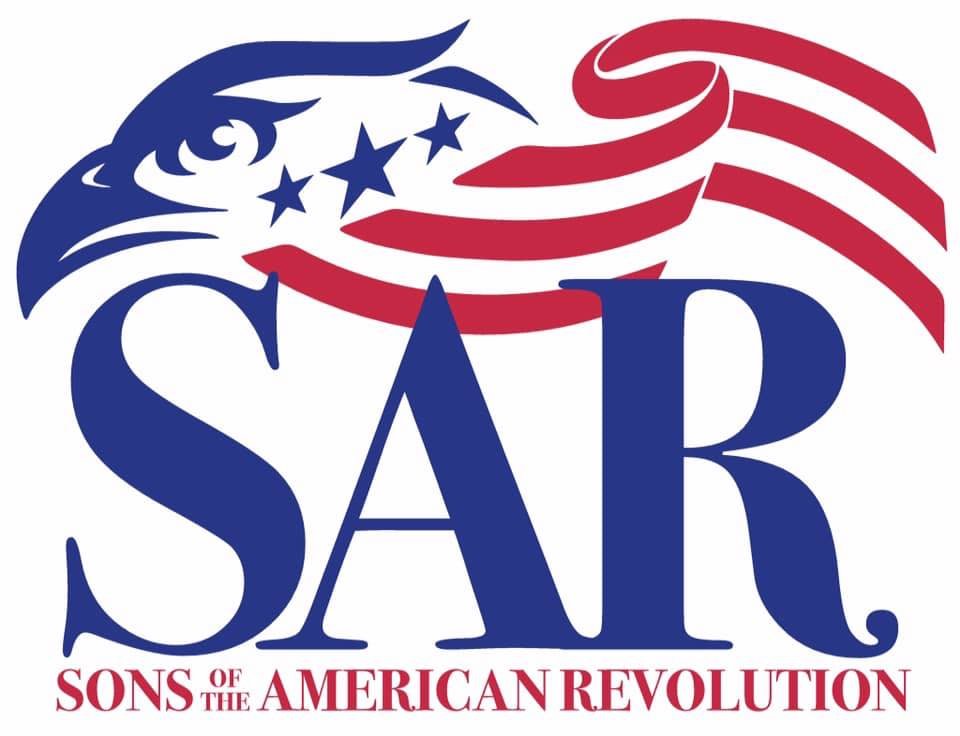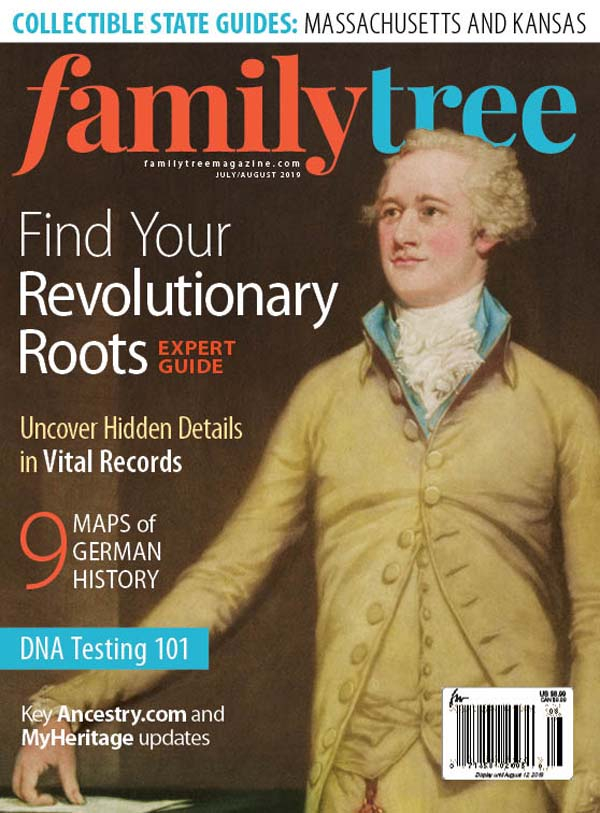by Mark Cross, current Registrar of Sons of Liberty chapter of SAR
If you are searching for your own American Patriot Ancestor who supported the cause for Independence, and you’d like to join the SAR, here are some suggestions to help.

If you’d like to join the SAR, click on About > How To Join.
Find Your Revolutionary Roots magazine article
Family Tree Magazine had an excellent article about how to “Find Your Revolutionary Roots” in their July/August 2019 issue. The article was written by Shelley Bishop, a professional genealogist and member of the Daughters of the American Revolution (DAR). She gives some excellent resources and ideas in the article, based in part on her experience researching her own American Patriot.

I subscribe to the paper hard copy edition, but the magazine is available as a digital edition online.
Enjoy your search!
Suggestions to Help
Always start with yourself and work backwards in time. Starting with someone in the past is always a genealogical mistake, as you may find you are actually not related.
For example, people sometimes hear a story that they are related to someone famous, such as George Washington (an ancestor’s maiden name is Washington, for example), and may have a family story that George is their x-great grandfather. However, George did not have any descendants, as he had no biological children! George married his wife Martha, who had children from a previous marriage before her first husband died. George raised those children as his own and loved them dearly, but he never actually fathered any children with Martha. It is surmised there may have been medical issues why they could not conceive, and they even lamented the fact they had no children together. This is “common knowledge” among genealogists that other people may not know. Any claim to be descended from George Washington is untrue! More details can be found online. Start with yourself and move backwards in time to find your ancestor.
Once you have documentation or clues leading you back to an American Patriot, use the DAR’s Genealogical Research System to help identify qualifying service.
The SAR does not have an index of patriots, but Ancestry has online records for “Sons of the American Revolution Membership Applications, 1889-1970” if you subscribe to Ancestry. Note that standards have changed over the years, so if a cousin or other relative joined SAR or DAR more than a few years ago, these records alone may not be sufficient, but will provide clues of other sources for you to conduct more extensive research.
Also note that neither SAR or DAR has a comprehensive database of members or Patriots. Just because you don’t find your ancestor in the database does not mean they have no qualifying service for American Independence.
The National Archives has a guide to the American Revolution online with links to other records including Bounty Land Records and Military Service Records.
Military Records are available in several places online, including the Revolutionary War Collection on Fold3, Revolutionary War Rosters on FamilySearch, and databases on ancestry, including Pension Records if the veteran lived long enough to qualify for a government military pension.
Bounty Land Records may also be found at the Bureau of Land Management General Land Office site. The young United States sometimes paid soldiers with Bounty Land instead of cash. Note that some sold their warrants instead of moving to new territories, but names found could be important clues for further research.
FamilySearch has an excellent Wiki page with good information about Revolution War Service Records.
Also, the Sons of Liberty Chapter Registrar provides SAR Research Assistance every other month at the Southern California Genealogical Society. This event is also on our Chapter Calendar of Events.
Good genealogy research practice includes reasonably exhaustive research. If no Vital Records such as Birth and Death Certificates are available for the time period, look for church records, as a baptism or marriage record may prove kinship. Also look for probate and will records, as a child may inherit property or goods from their parents (father and/or mother) and look for land deeds which may mention names or kinship. Census records are helpful, but 1790-1840 census records less so as the only name on the record is the head of the household; the wife and children are not named.
And also remember — not all records are online! Sometimes you have to find records in books, on microfilm, or even the original paper! Don’t forget your own home sources, and check with local Historical and Genealogical Societies for the area your ancestors lived, as well as courthouses, churches, and newspapers of the time. And much more! The possibilities stretch beyond your imagination!
If you do not subscribe to ancestry.com at home, many organization have a “library subscription” which means it is free to the user at their facility. Many public libraries have a library subscription. Also check out SCGS or a Family History Center, the sponsors of the FamilySearch website.
There are also some online videos that are helpful. Check out a video from Ancestry about Using SAR Applications:
Also check out a longer video from Ancestry about Understanding the SAR/DAR applications:
